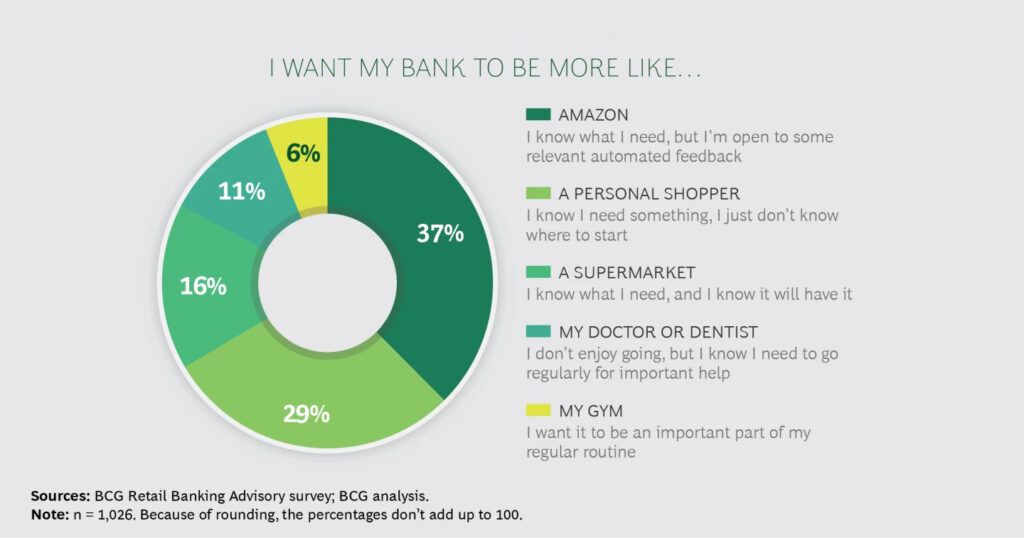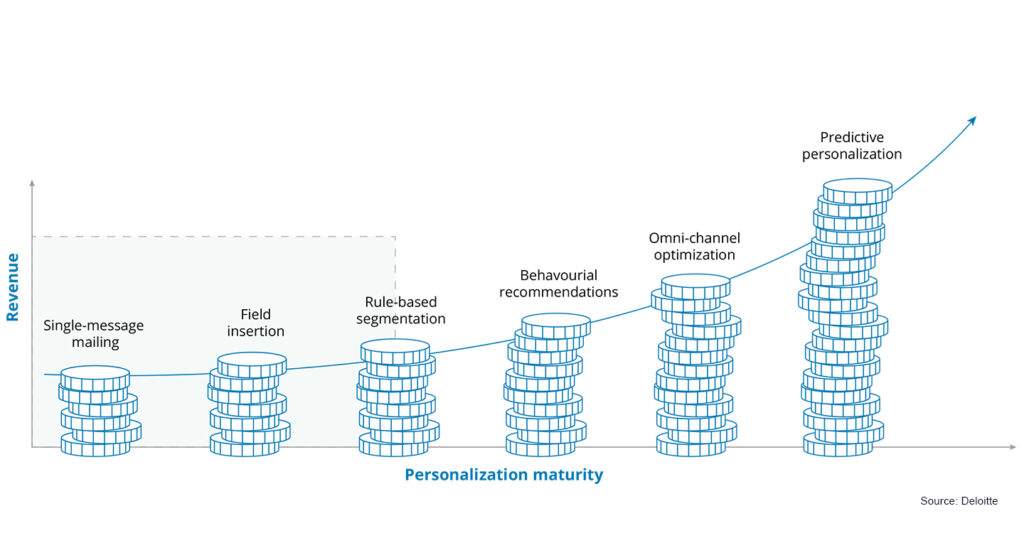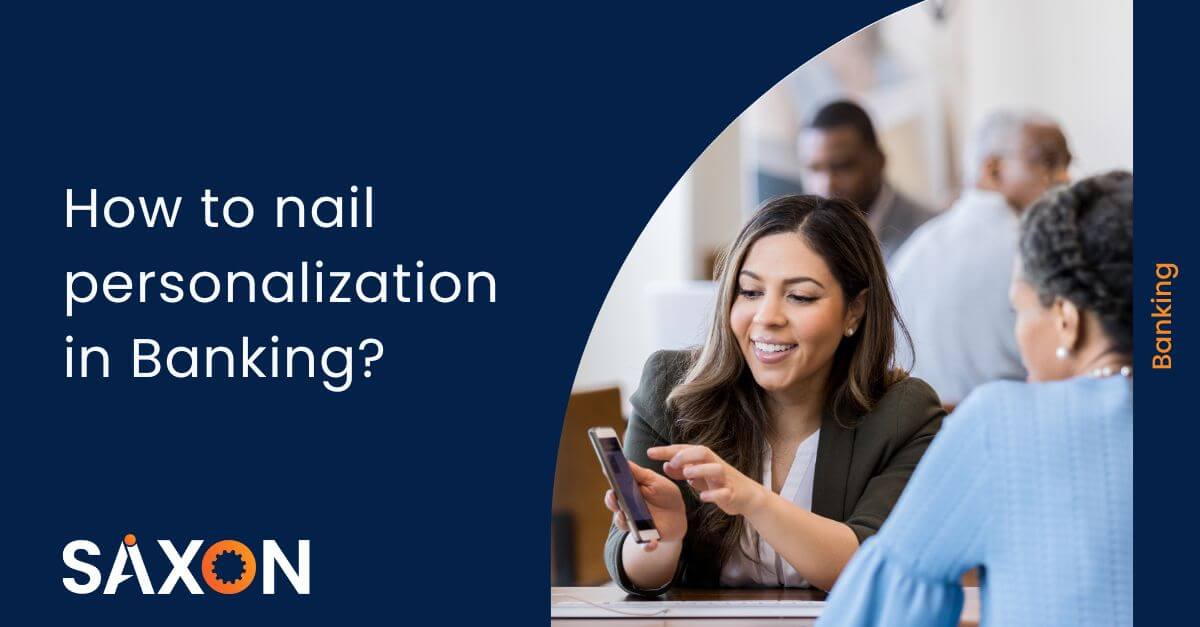Since the late 20th century, banking has become more inclusive. New players pushed the competition forward. Banks have become more competitive, squeezing their profit margins. Over time, the scope of banking services has expanded beyond loans and deposits. So are customer expectations. Millennial customers are expecting personalization in banking. Banks need more than just competitive offerings to get a competitive advantage.
A PwC survey revealed that more than 70% of millennials prefer personalized offers and services from their banks.

Personalization is a win-win for banks and customers. Customers choose the banks that offer seamless banking experiences and personalized offers over the ones that don’t. They expect their banks to run like e-commerce platforms like Amazon. They need solutions for their unique financial needs.
In 2022, the Russia-Ukraine war and rising inflation brought uncertainty to the world economy. During this period, the personal financial situation of consumers declined by 20%. During such uncertain times, the 2022 U.S. Retail Banking Satisfaction Survey found an interesting fact that emphasizes the importance of personalization in banking. It says, ‘It’s no longer predominately about being fast, efficient, or convenient — it’s about supporting customers during challenging times.’
Personalization drives customer loyalty, which will eventually reflect in their balance sheets. BCG estimates that personalization can uplift bank revenues by 10%.

Types of Personalization in Banking
Personalization in banking can be of three types based on how you reach your customers.
- Prescriptive personalization: prescriptive personalization offers customized recommendations to your customers before they ask you. For instance, imagine yourself as a youngster who got his first job. You want to plan your finances better. Then you receive a well-crafted blog from your bank suggesting some best investment plans without asking for them. Wouldn’t you be glad to consider their suggestion? The bank listens to you, understands your needs, and provides a solution using your 360-degree customer profile. This is prescriptive personalization. Knowing your customers’ needs and offering customized products and services to meet them.
- Real-time personalization: While prescriptive personalization uses a customer’s historical data, real-time personalization uses real-time customer information. It’s like those recommendations you get on Amazon or Netflix. For instance, your customer is looking to buy furniture. You offer them a discount for paying with your bank credit card. Your customers would love that.
- Machine learning personalization: You can incorporate smart technologies like Machine Learning into your personalization strategy. Machine learning algorithms analyze the past and current data on your customers, analyze their behavior and send them relevant offers.
Challenges to personalization in banking
Personalization in banking requires a deep understanding of your customers – their credit history, investments, etc. Banks have an abundance of customer information. However, this information is scattered across isolated systems serving each department. These departmental silos are further divided based on their functions. For example, a risk management silo again has market, credit, and operational silos. So, there are silos within silos.
Single customer view, a.k.a C360, is the cornerstone for personalization in banking. Given the volume of data they carry, banks have excellent scope for personalization on par with e-commerce. Banks using data analytics and behavioral science capabilities can get the coveted single customer view.
More data better the results. But data silos are a barrier to achieving this feat. Data silos give access to only a limited pool of information, compromising the data quality.
Lacking a single customer view, banks are hinging product-centric models instead of customer-centric models. In a Deloitte survey, only 30% of bank customers agreed they received personalized products and offers from their banks. You cannot offer the same product to customers with different needs. How likely would a college student looking for a student loan appreciate a recommendation for a car loan?
Building a single source of truth for personalization in Banking
Personalization requires banks to undergo a fundamental shift in their internal operations. You need to break down the data silos and integrate all your systems to create a single source of truth. For that, you need to modernize your legacy systems. If you use manual processes or siloed software solutions, you must switch to cloud-native digital applications.
However, scaling up digitalization in a bank can be challenging, given the range of operations and the volume of data. Banking is primarily a non-IT sector that has limited IT resources. Deploying a solution for each process in banking operations is resource intensive. With traditional development methods, banks face challenges such as an IT talent crunch, longer time to value, tight IT budgets, and change resistance.
Banks can use low-code development methods for developing apps. For example, you can develop apps faster on Microsoft Power Platform. You can integrate these apps with the Azure cloud. If you use Microsoft’s productivity tools and business applications, you can integrate these tools with the apps. Thus, you can create a single source of truth that streamlines data flow across your bank.
You can incorporate artificial intelligence, deep learning, and machine learning capabilities into your data ecosystem. These intelligent capabilities will help you analyze data – such as transaction history, credit history, demographics, location, and buying patterns. Using managed BI services helps you integrate all this data into a single data platform. You can draw meaningful insights and deeply understand your customers’ needs.
For example, you can identify customers, with X annual income, searching for short-term investment plans. You can offer them your best investment plans that would give lucrative returns to customers.
Want to modernize your legacy apps and build your digital ecosystem to offer personalization to your customers?
Digital transformation and customer experience experts at Saxon love to help you.


